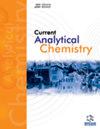Recent Advances in Technologies for Removing Nanoparticles from Water
IF 1.7
4区 化学
Q3 CHEMISTRY, ANALYTICAL
引用次数: 0
Abstract
:: Nanoparticles are widely used in manufacturing, daily life applications, and other fields because of their unique properties. However, the nanoparticles that end up in surface water are difficult to break down naturally and cause environmental hazards that cannot be ignored. In this paper, the migration mode of nanoparticles in the environment was proposed, and the factors affecting the removal efficiency of nanoparticles mainly include ionic strength, natural organic matter, surface properties, etc. The common methods for removing nanoparticles mainly include coagulation precipitation methods, activated sludge methods, membrane filtration methods, and adsorption methods. In addition, new technologies such as photothermal removal and electro-adsorption have also been applied to remove nanoparticles in water. In future research, combining the advantages of different removal methods and using different methods interactively to remove nanoparticles in water could become a new research direction.去除水中纳米颗粒技术的最新进展
::纳米粒子因其独特的性质被广泛应用于制造业、日常生活应用和其他领域。然而,最终进入地表水的纳米颗粒难以自然分解,对环境造成的危害不容忽视。本文提出了纳米粒子在环境中的迁移模式,影响纳米粒子去除效率的因素主要包括离子强度、天然有机物、表面性质等。去除纳米颗粒的常用方法主要有混凝沉淀法、活性污泥法、膜过滤法和吸附法等。此外,光热去除、电吸附等新技术也被应用于去除水中的纳米颗粒。在未来的研究中,结合不同去除方法的优势,交互使用不同方法去除水中的纳米颗粒可能会成为一个新的研究方向。
本文章由计算机程序翻译,如有差异,请以英文原文为准。
求助全文
约1分钟内获得全文
求助全文
来源期刊

Current Analytical Chemistry
化学-分析化学
CiteScore
4.10
自引率
0.00%
发文量
90
审稿时长
9 months
期刊介绍:
Current Analytical Chemistry publishes full-length/mini reviews and original research articles on the most recent advances in analytical chemistry. All aspects of the field are represented, including analytical methodology, techniques, and instrumentation in both fundamental and applied research topics of interest to the broad readership of the journal. Current Analytical Chemistry strives to serve as an authoritative source of information in analytical chemistry and in related applications such as biochemical analysis, pharmaceutical research, quantitative biological imaging, novel sensors, and nanotechnology.
 求助内容:
求助内容: 应助结果提醒方式:
应助结果提醒方式:


